The Rules of Unified English Braille (commonly known as “The UEB Rulebook”) was launched on 5 June 2010 in association with the Annual General Meeting of the Australian Braille Authority in Sydney, Australia.
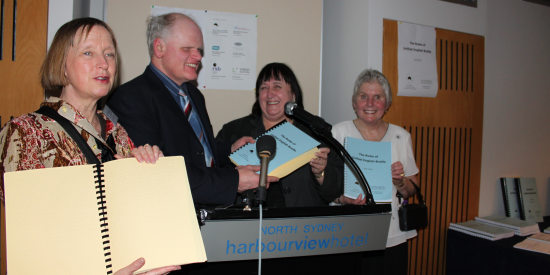
Mary Schnackenberg, Bruce Maguire, Maryanne Diamond and Christine Simpson at the UEB Rulebook launch.
In her foreword to the Rulebook, Darleen Bogart, Chair of the UEB Project Committee 1991-2010 wrote: “It has been an incredible journey; one that began in 1991 when the Braille Authority of North America (BANA) embarked on a research project to determine the feasibility of unifying its literary and technical codes. In 1993 the internationalisation of the project became a reality when the International Council on English Braille (ICEB) accepted the BANA proposal at its first Executive meeting in Sydney, Australia.”
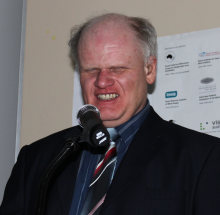
Bruce Maguire, Chair of the Rulebook Steering Committee
“Unified English Braille (UEB) was adopted as Australia’s official braille code on May 14 2005 during the Annual Meeting of the Australian Braille Authority (ABA). At that time, there were few teaching and learning resources available for UEB and although the UEB Primer developed by Josie Howse 2006 continues to be invaluable for anyone learning the basics of UEB, there was clearly a need for an authoritative and complete elaboration of the rules of the new code that could be used by braille educators, producers and readers …”, wrote Bruce Maguire in his Rulebook preface.
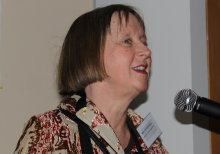
Mary Schnackenberg, President of the International Council on English Braille
Edited by Christine Simpson and published in Australia by the Round Table on Information Access for People with Print Disabilities Inc, the UEB Rulebook represents almost twenty years of international collaboration, commitment and debate amongst some very dedicated braille experts from each of the ICEB member countries – Australia, Canada, New Zealand, Nigeria, South Africa, United Kingdom and the United States. We were fortunate to have Mary Schnackenberg, Chair of the ICEB, among our guests at the Rulebook launch. Mary addressed the audience, giving some background to the project and indicating how pleased the ICEB was to see their long-standing project have such a positive outcome.
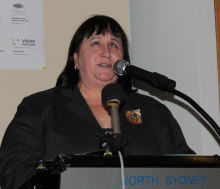
Maryanne Diamond, President of the World Blind Union
In launching the Rules of Unified English Braille, Maryanne Diamond, President of the World Blind Union, spoke of the importance of braille in her life, in her home, her local community involvements, her employment and in her role as WBU president.
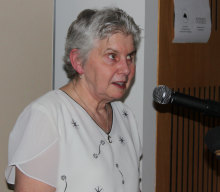
Christine Simpson, editor of the Rulebook
In addressing the audience, Christine Simpson gratefully acknowledged the support of project sponsors, thanking them for their commitment. She thanked members of the Project Steering Committee, lead by Bruce Maguire, for the guidance and advice given to her. She thanked those who had assisted with proofreading, layout advice and composition of the many examples. Christine particularly acknowledged the support and guidance given to her by Phyllis Landon, Chair of the UEB Rules Committee.
Christine spoke of some of the challenges that she, as a totally blind editor, had experienced in editing a publication which was to be produced simultaneously in both print and braille; one which would need regular updating and one which required such careful use of various print fonts, styles and other visual characteristics. She stated, “Its production provided me with an amazing challenge. My attention to detail was really tested, my Microsoft Word skills have greatly improved and my ability to think braille and print layouts at the same time was most important.”
The official version of the Rules of Unified English Braille is on the ICEB website, where print and braille versions are available for free download.
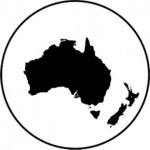 The Australian Braille Authority is a subcommittee of the Round Table on Information Access for People with a Print Disability Inc.
The Australian Braille Authority is a subcommittee of the Round Table on Information Access for People with a Print Disability Inc.
Last updated: March 13, 2014 at 8:18 am
